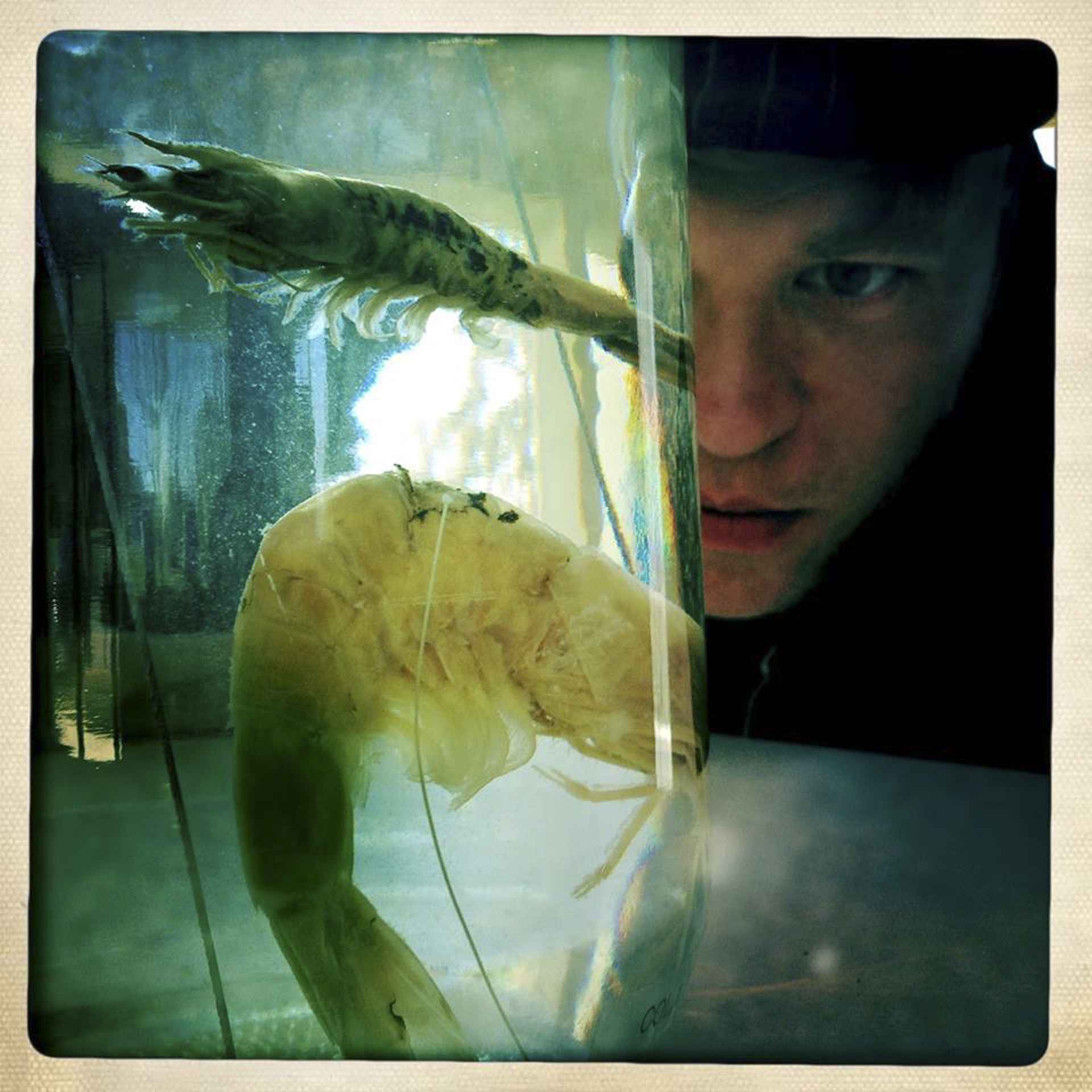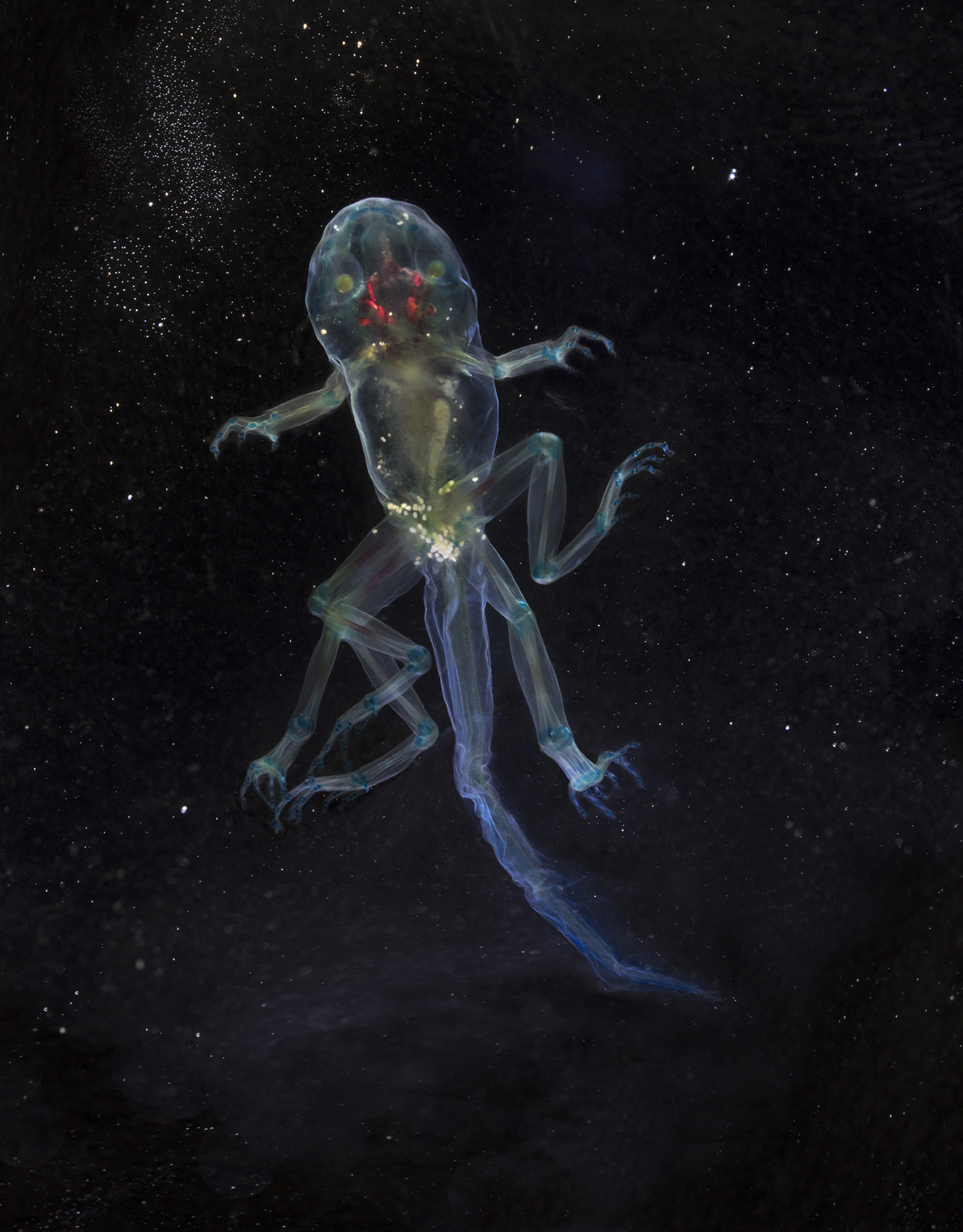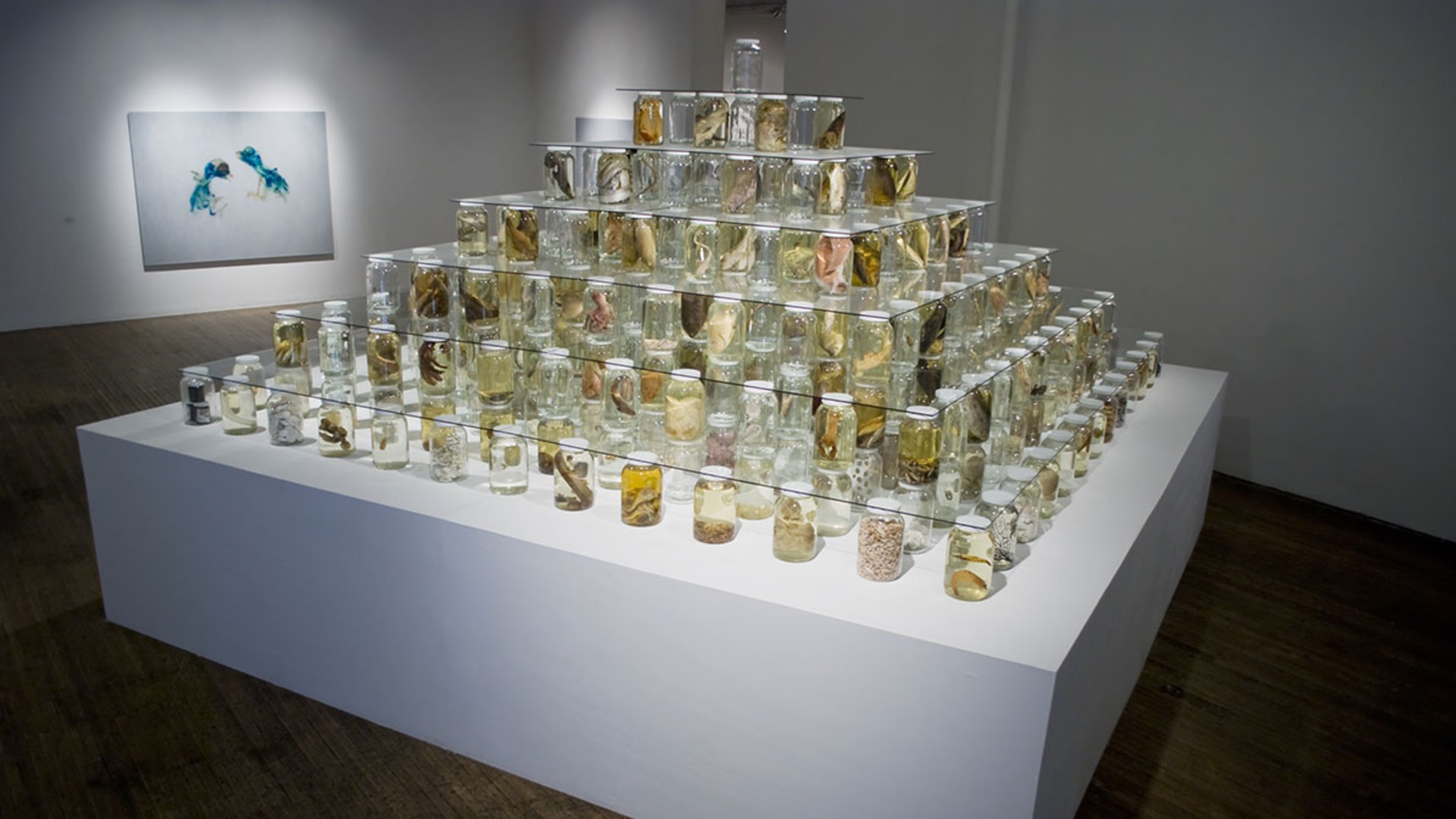Brandon Ballengée has found a way to make the unbearable beautiful.
Ballengée has professionally merged art and science, creating transdisciplinary artworks that draw on his research as a scientist to look at issues like pollution, harmful algal blooms, habitat loss and extinction.
And his work comes at crucial moment. Mounting environmental crises can push people to turn away — but Ballengée forces us to look at our problems head on by creating mesmerizing art with extinction and imperiled species as its subject.
His work, he says, is intended not to generate fear but empathy, understanding and action.
For 20 years he has used both science and art to chronicle deformities and declining populations among amphibians. Currently he works as a postdoctoral researcher in the Department of Biological Sciences at Louisiana State University, where he studies the impacts of the Deepwater Horizon oil spill on the Gulf of Mexico ecosystem.
And his artwork has hit a nerve — it’s been shown across the United States and in 20 countries around the world.
We talked with Ballengée about how he uses art to communicate scientific findings, why he involves the community in his process and how he’s creating his own on-the-ground restoration project.
How did you end up on this overlapping path of art and science, and where do you hope it leads?
Even as a child I always wanted to be both an artist and a scientist. Pragmatically (and academically) it just took time to sort out how to do this. Today my work as a biologist focuses on species impacted by complicated, often degraded, ecosystems such as amphibians and fishes. This research and the experience of working with impacted organisms motivates and inspires my art. While making art I reflect on the science from a different viewpoint, which leads to new questions, experiments and more science. The practices complement one another and I cannot imagine one without the other.

Through science, I can methodically achieve a better understanding of ecological phenomenon and share these findings with the research community. Whereas my artworks can carry an expressive message about impacted organisms to a wider non-science audience and inspire action.
What’s one of your favorite pieces of art or exhibitions that you’ve created?
My work with amphibians has been more of an emergency response to the current population crisis they face than a favorite series per se.
More than 40 percent of known amphibian species are considered in decline, and more than 200 species have gone missing in recent decades. These are ancient marvels of evolution with a wonderful array of shapes, forms, colors and behaviors. They are “keystone” species to our terrestrial ecosystems, meaning that when they are gone many other species are impacted. They are disappearing so fast. It is both tragic and alarming.
My series of artworks, Malamp Reliquaries, is my artistic response to this study of deformed and declining amphibians, as well as hopefully a means to inspire people to help protect these amazing creatures.

What roles do collaboration and community play in your work?
Growing up in a rural environment, I was always inspired by animals and nature. This entrenched in me a strong desire to conserve and protect biodiversity and ecosystems. Bringing this message to the public underlies all of my work in science and art — what I call an impetus for “ecosystem activism.” My field investigations and laboratory programs stress public involvement, engagement and collaboration. Much of my artistic practice is also collaborative as well.
While conducting ecological field surveys I encourage public participation in “eco-actions.” Citizens contribute by actively helping to collect data on wildlife, monitor, even help to restore wetlands and other ecosystems. In turn, they learn about the ecology and biodiversity of where they live and act to protect it. I also encourage participants to express their experiences by making their own art. Through these direct actions we collectively learn, try to fix habitats and share this story with larger audiences through art.
How do you see your work helping to educate the public about environmental issues?
Often people feel that environmental problems are too large and too widespread for individuals to make a difference. This is absolutely not the case. All of our individual actions every day have an influence on ecosystems and biodiversity: what we chose to eat; how we live; where we live; how we travel; if we own land, what we do with it; how we discuss these ideas with others; and on and on.
We are part of a larger living community and can individually and collectively make large differences.
Following this concept, my wife Aurore Ballengée and our two children, Victor and Lily, and I have started the Atelier de la Nature project. Two years ago, we purchased heavily farmed soy fields in rural south Louisiana and have worked to regenerate the ecosystems from a transgenic monoculture into a modest nature reserve and outdoor education center.
We offer environmental education programs, sustainable food and art-science events open to all ages. Already participants have collaborated to “sculpt” the land with native species, worked to reestablish “Cajun” prairie, planted over a thousand native trees, created pollinator habitats and grown food without pesticides using permaculture, Creole and other indigenous methods.
The project has already yielded results in the ecological sense, with dozens of species of birds and mammals returning (and breeding), 23 species of amphibians and reptiles currently occupying the property, countless insects — all coming back to once-barren land. In the human sense, hundreds of youth have helped with restoration of the lands or participated in our programs.
Your postdoctoral research has focused on the biological impacts of the Deepwater Horizon oil spill in the Gulf of Mexico. How has art helped you communicate what you’ve you found?
The 2010 Deepwater Horizon oil spill was the largest environmental disaster in the history of the United States (outside perhaps of industrial agriculture or European colonization). Literally billions of organisms were affected — endangered sea turtles, marine mammals, plankton, deep-water alga, corals, birds, people. There is still so much we do not yet understand about the impact on wildlife populations, coastal (human) communities and the long-term impacts of the Gulf of Mexico food chain and ecosystems. Much more continued research is needed for decades to come.
My installation Collapse called into question the impacts to the Gulf of Mexico’s food chain following the spill and use of harmful dispersants to “clean” the oil. Physically, Collapse was a pyramid shaped installation of preserved fish, other aquatic organisms and Deep Water Horizon contaminates in gallon specimen jars. There were over 20,000 specimens in Collapse — from huge deep sea roaches (isopods), to oil-stained shrimp with physical deformities, to jars packed with tiny sea snails. It was meant to recall the fragile inter-trophic relationships between Gulf species and the way the spill may have altered this.
Collapse was made in collaboration with fellow biologists Todd Gardner, Jack Rudloe and Peter Warny, as well as my former student, artist Brian Schiering, and several Gulf residents who sent oiled specimens but wished to remain anonymous. It took us two years to gather data, specimens and other samples.
Since 2016 my research has focused on locating species of endemic (not found anywhere else in the world) Gulf fishes that have not been reported since the spill. To date there are still 13 “missing” species. With the help of shrimpers, fisherman and Gulf residents I hope we can find these ghosts of the Gulf.
![]()


